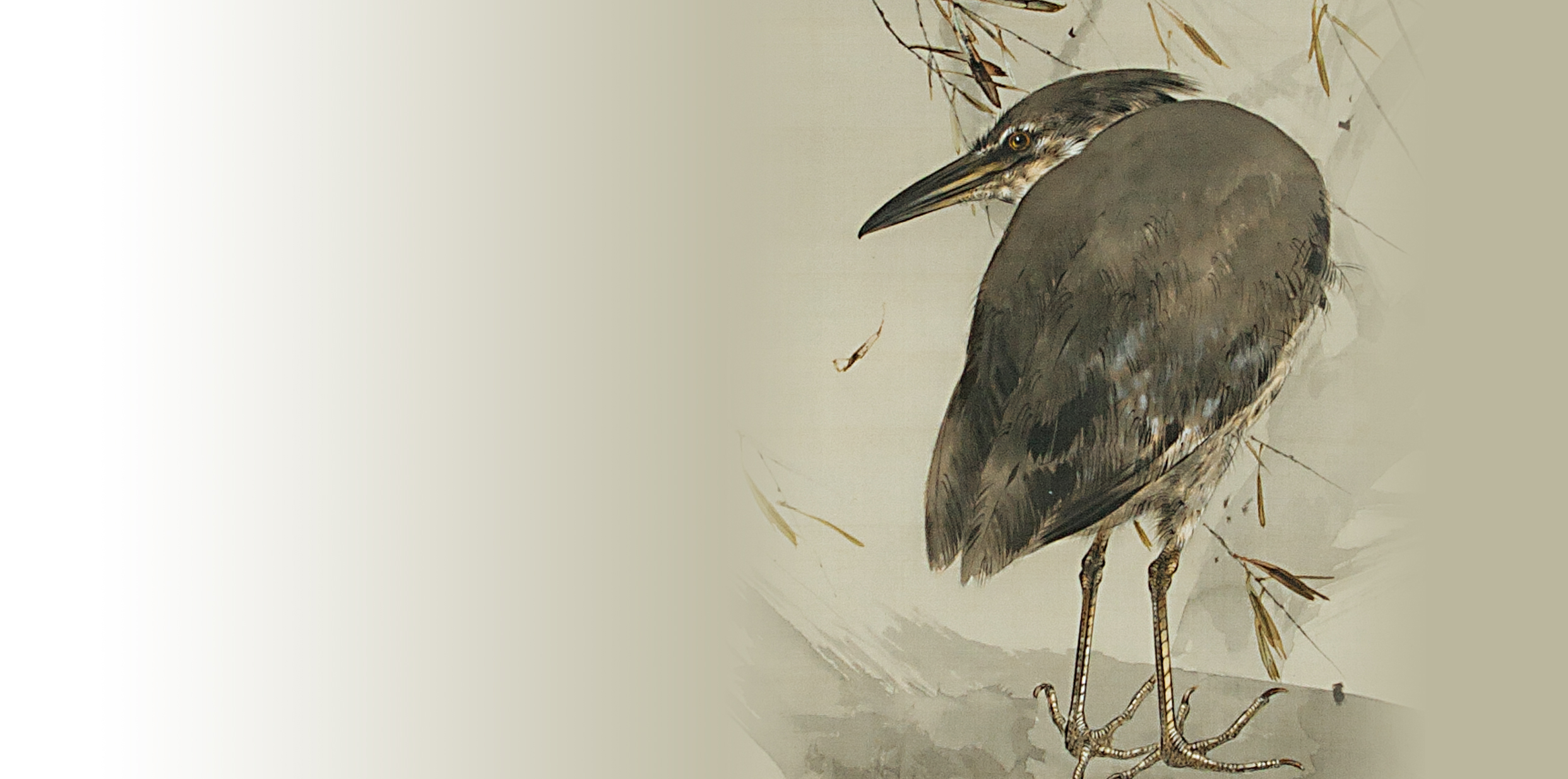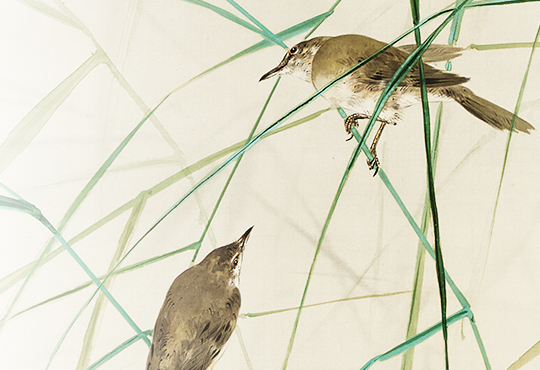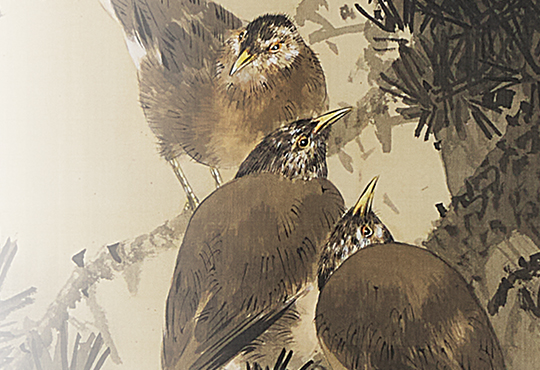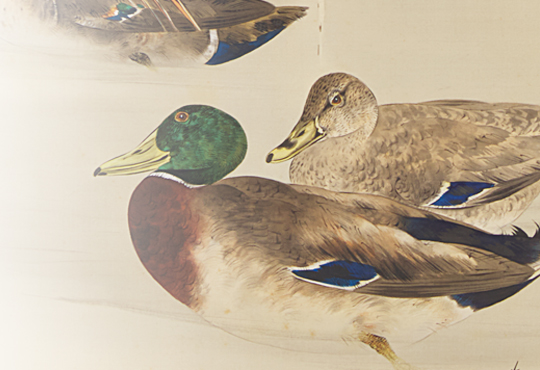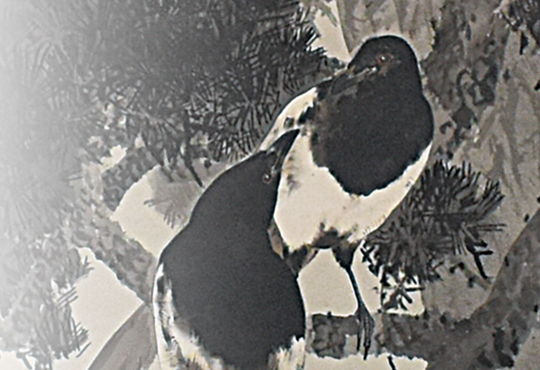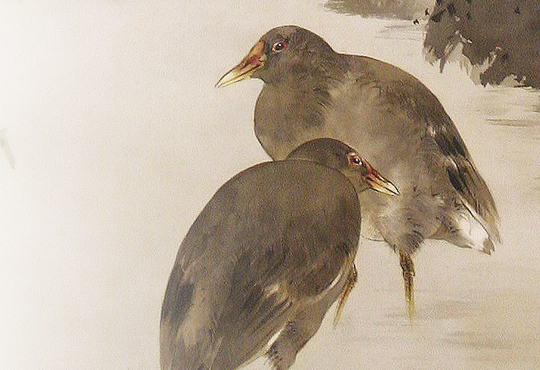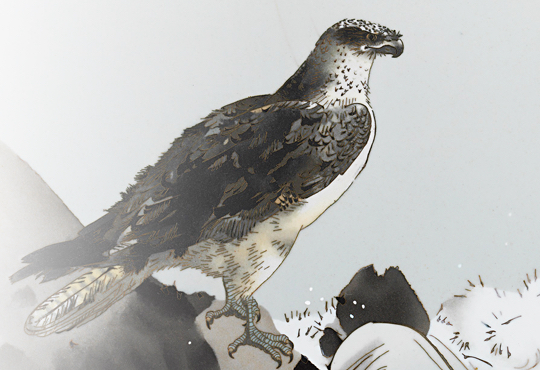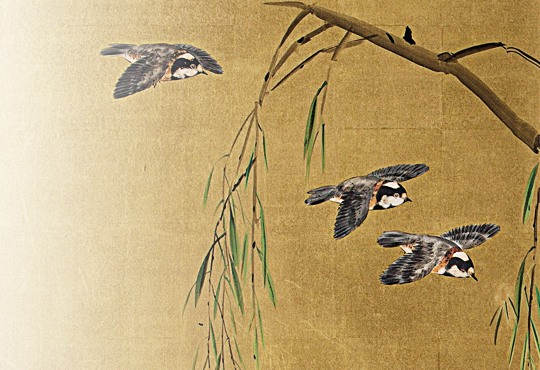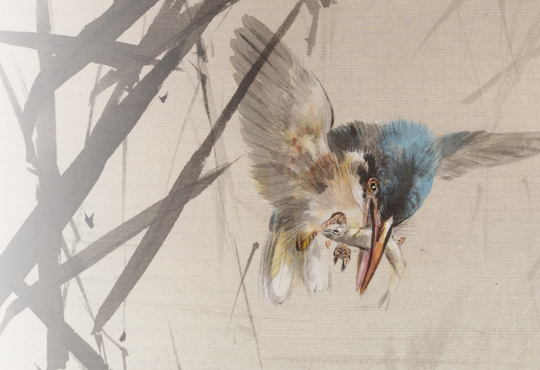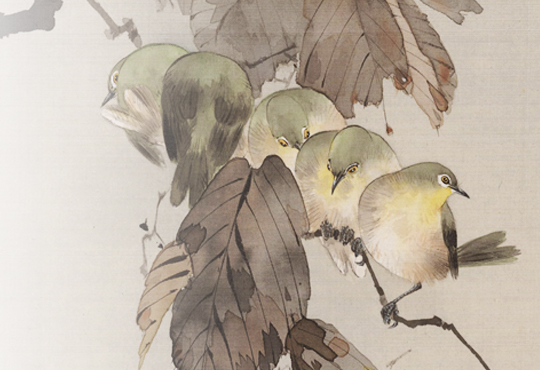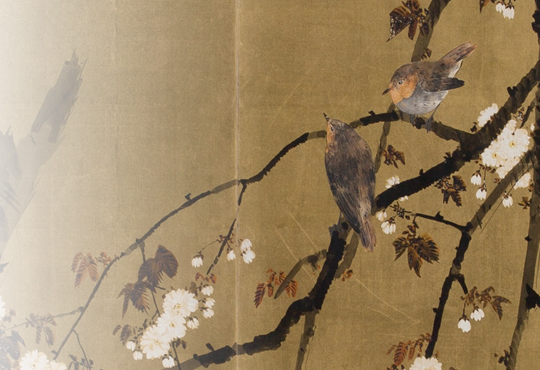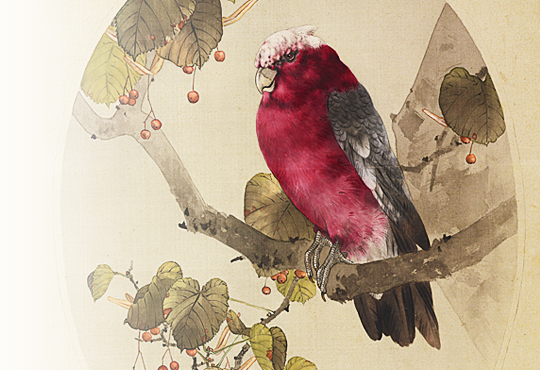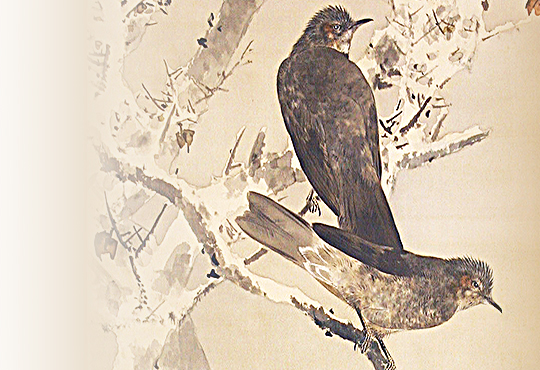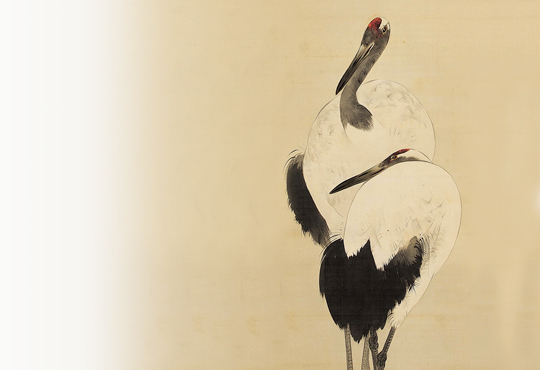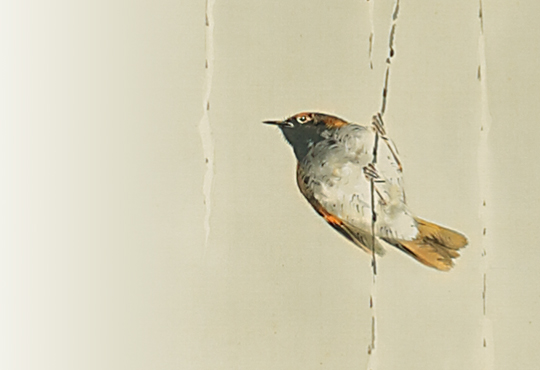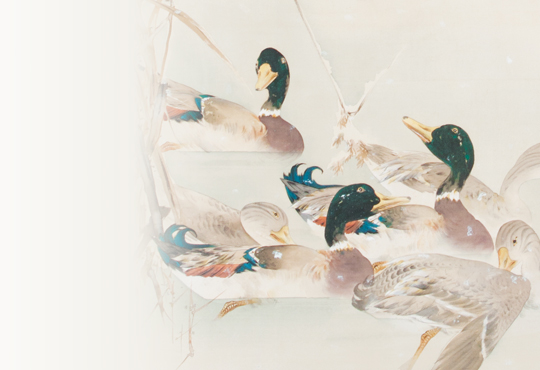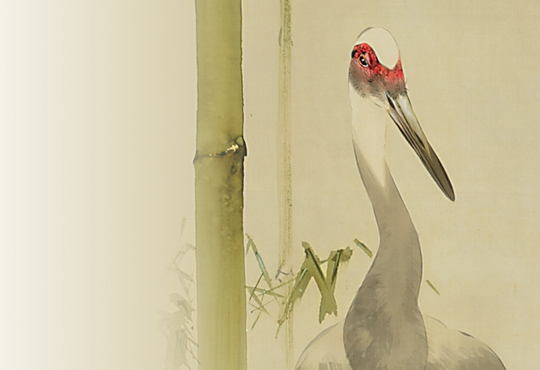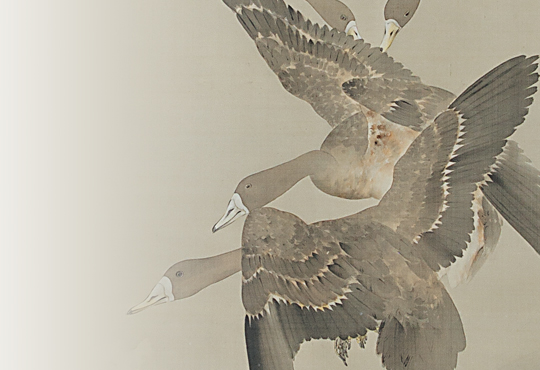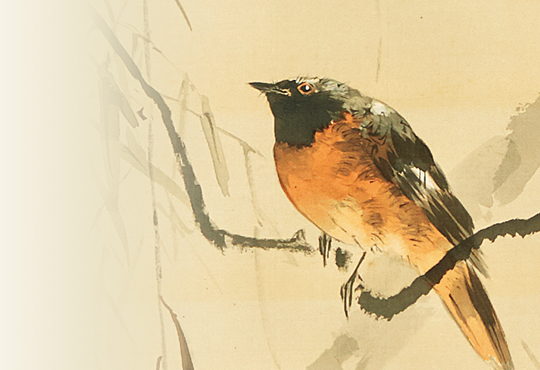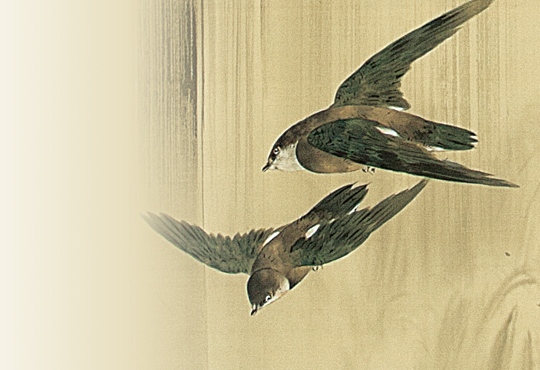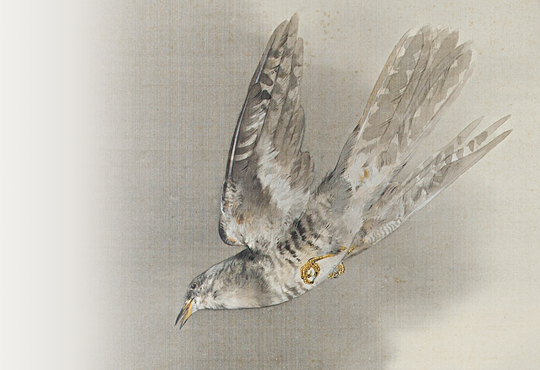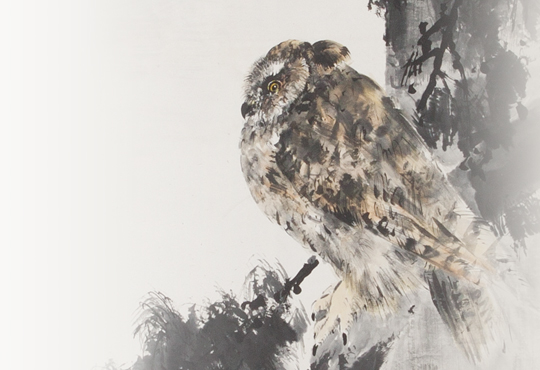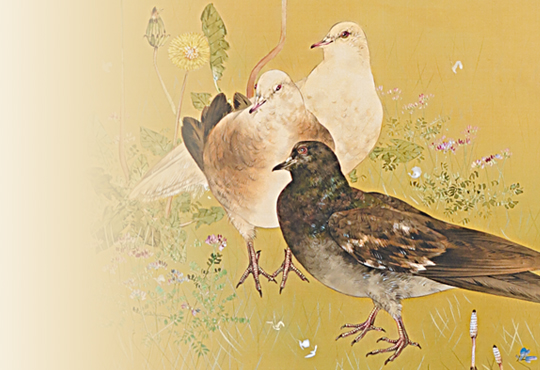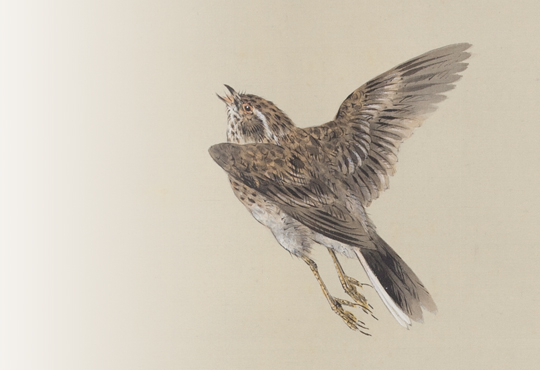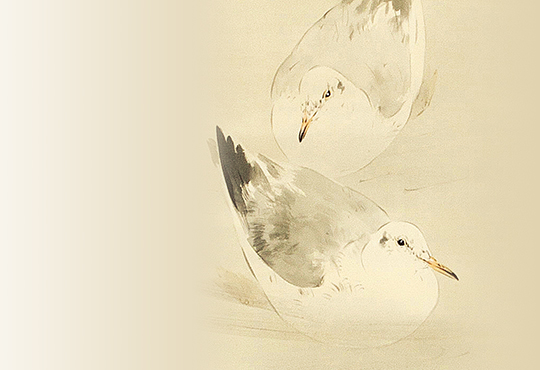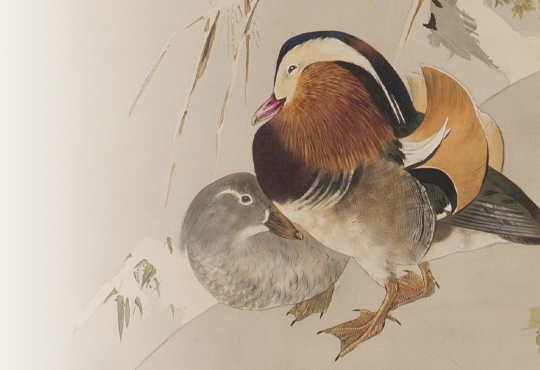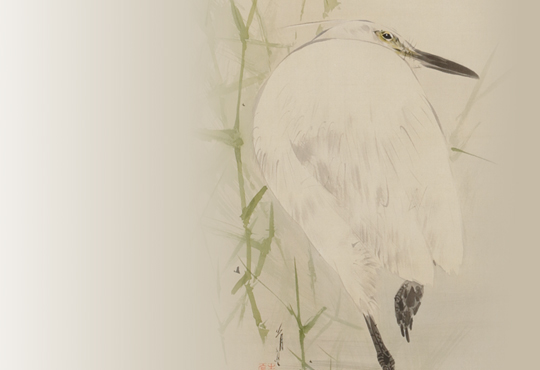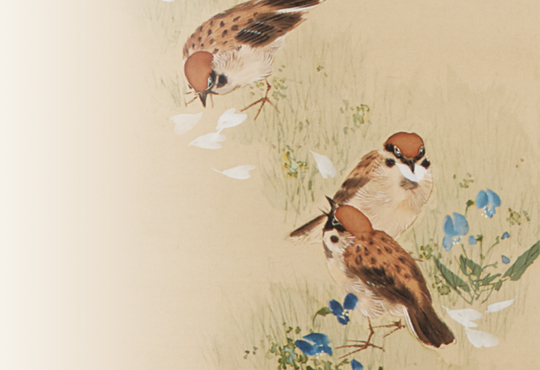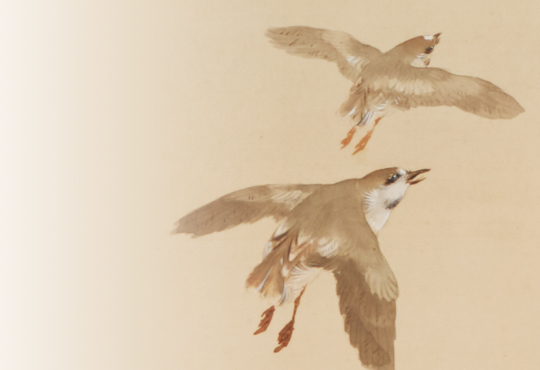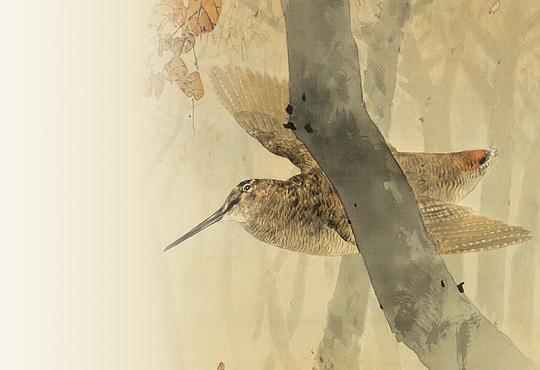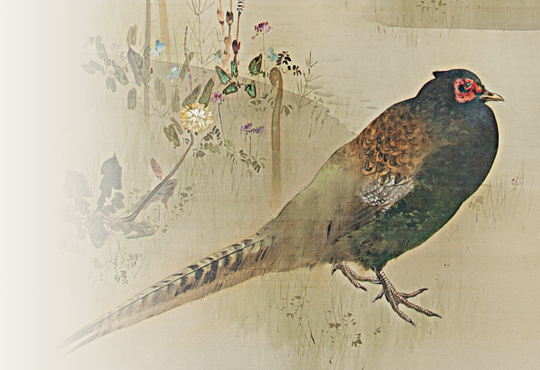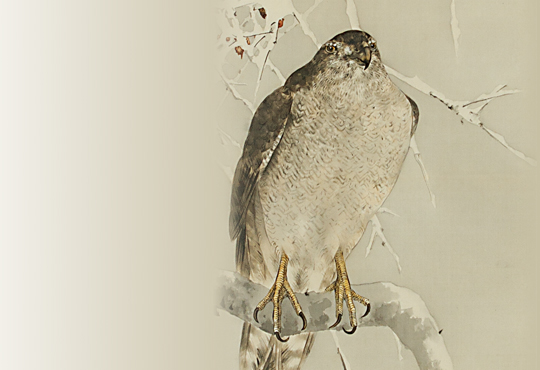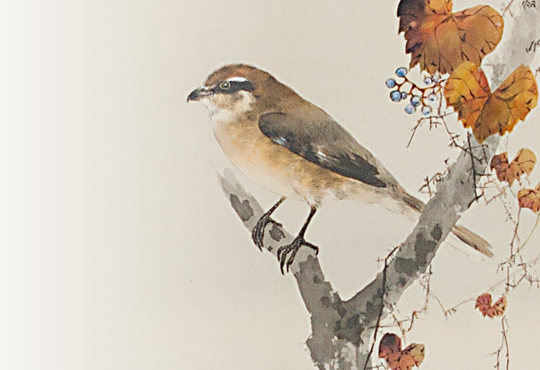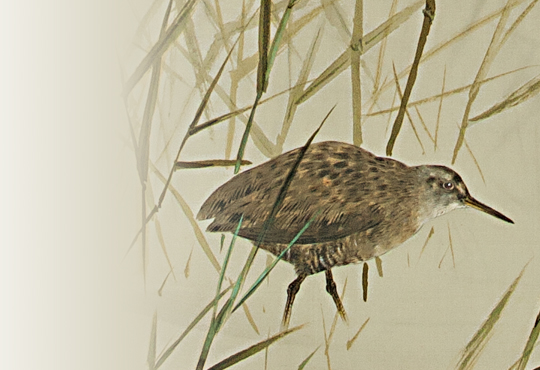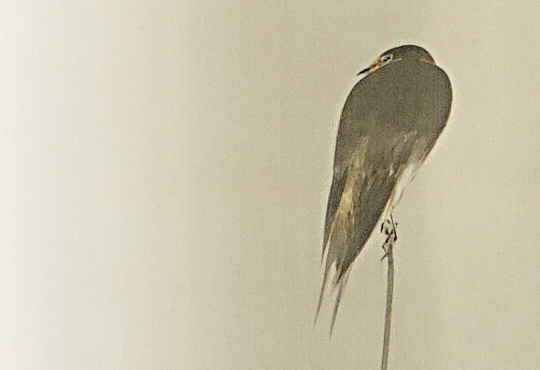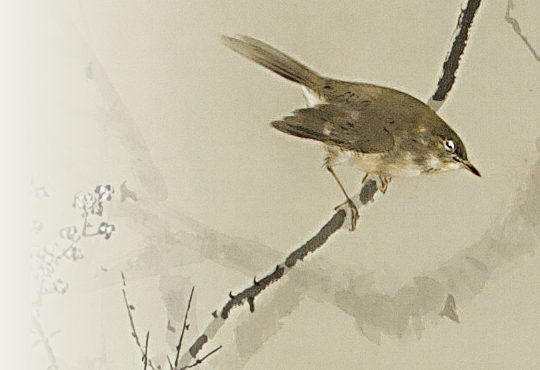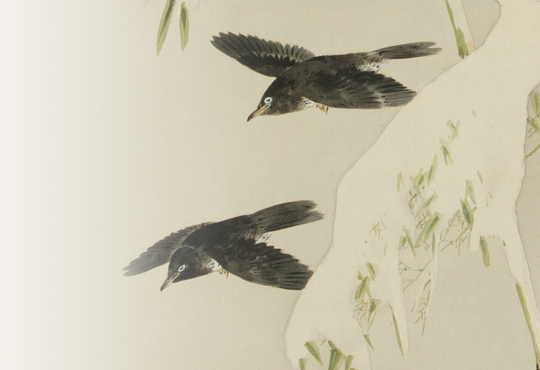Black-crowned Night Heron
A set of twelve scrolls,
color on silk, with a box signed and sealed by the artist
size : 115×40 ㎝ /212×54 ㎝
vol.05 Transforming Ugliness into Beauty: Black-crowned Night Heron under the moonlight
The Black-crowned Night Heron (Nycticorax nycticorax) is one of the medium-sized herons (57cm in body length) that can be found all over Japan. Being nocturnal, they sleep in flocks in forests during the day. At night, they move to the waters (rivers, lakes, paddy fields) and feed on small animals such as fishes and frogs. They are also called“Night crow” for their gestures and calling voices are very similar to that of crows.
Existing in large numbers, they are frequently spotted even in cities near small rivers and park ponds. Thus, for both ancient and modern people, they have been an“unnoticed but very familiar bird” to humans.
For many Japanese artworks, herons (such as the Grey Herons, the Great Egrets, and the Little Egrets) are popular subject. The Black-crowned Night Herons, in particular, have frequently been painted and there are famous paintings such as “Willow with Heron and Other Birds” by Goshun (Kyoto National Museum) and “Resting on the Wheel” by Takeuchi Seiho (Yamatane Museum of Art). There are two reasons why the Night Herons have been a popular subject. One is simply for its beauty. The adults of the Black-crowned Night Herons have a beautiful color contrast along its body: a blue-black colored head and back, with a pure white neck and belly. Their red eyes and yellow legs also add accent colors. The long thin white crest growing from the tip of its head is glamorous yet serene. “Sophisticated beauty” or “modern beauty” might be an appropriate description for this bird’s beauty. On the other hand, the juveniles of the Night Herons have small white dots on its brown body and has been called “Hoshigoi”(translates random stars). Their beauty is more rustic and simpler, like that of Hagi pottery or Karatsu ware. Nonetheless, both the adults and the juveniles are equally beautiful in monochrome and color paintings.
Another reason for the Night Heron’s popularity is its familiarity. As previously mentioned, the Night Herons exist in large numbers and are easily found in paddy fields and small rivers near human habitation. It must have been easy for artists and painters to spot them near their homes and ateliers. At one point, they were even captured in large numbers for human consumption, so painters must have been able to buy them reasonably.
So how did Seitei paint a Night Heron? In this painting, a Night Heron perched on a weeping willow with withered leaves. Against a backdrop of full moon, she (from its appearance I can’t tell its sex so it could be a “he” ) boldly exposes her back, while showing the side of her attractive face just like “The Looking Back Beauty” by Hishikawa Moronobu (Tokyo National Museum). Her cool sidelong glance captures the viewers and her thick beak seems to smile mysteriously. Judging from the full moon that has almost reached its peak, she probably overslept a little, and is just about to fly out towards the waterside. The depiction of the entire body balance, as well as each body parts, are quite accurate like all Seitei’s works, such as the scales on the slender legs and the details of her toes. It shows Seitei’s superior artistic talent.
However, this Night Heron represents neither a “sophisticated beauty” in its adulthood nor a juvenile with “simple beauty.” For some birds they take several years to mature, and in the case of the Night Herons, it takes approximately three years. A juvenile Night Heron in its first year has a “simple beauty” , however, for next two years, they are in its “ugliest” stage of life. The bird illustrated in this painting is right before its maturity, the third winter. If she spends this winter safely, by the beginning of spring she will discard all her winter feathers and turn into a beautiful mature bird, and perhaps even fall in love. Adulthood “sophisticated beauty” is subtly hidden inside her, and not shown in its outer figure.
In this artwork, Seitei shows his strong motive by purposely choosing a young Night Heron in its ugliest stage of life. As a bird lover, he must have known that the Night Herons have seasonal changes in feather, and that within flocks there are some young birds that haven’t reached their “beauty” yet. Because of his knowledge, he had the confidence to choose and paint a young bird ‒ to prove that as long as an artist has his sense and skills, art can be created freely. Even if past artists (possibly future artists too) avoided drawing a young ugly bird, with his sense of beauty and skills, he could transform the bird into a beauty. It almost seems as if he claims “Look at this Night Heron! How beautiful this ugly bird is!” This artwork, in other words, is the challenge from Seitei to the world of Japanese art. I don’t know who could accept the challenge.
Author : Masao Takahashi Ph.D. (Ornithologist)
Dr. Masao Takahashi was born 1982 in Hachinohe (Aomori prefecture) and graduated from Rikkyo University’s Graduate School of Science. Dr. Takahashi specializes in behavioral ecology and the conservation of birds that inhabit farmlands and wet grasslands. Focusing on the relation between birds and art, he has participated in various museum and gallery talks.
